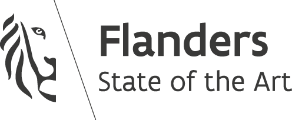Program – Fasch, Music at the Zerbst Court
Content:
Instrumentation
Program
J.F.Fasch, Fantasia, FaWV O:F1
J.F.Fasch, Prelude, FaWV K:G19
J.F.Fasch, Quartet, 2 vln, vla & bc, FaWV N:d3
J.F.Fasch, Fuga, FaWV K:d4
J.S.Bach, Sinfonia from ‘Ich steh mit meinem Fuß in grabe’
J.F.Fasch, Sonata for recorder and bassoon
J.F.Fasch, Canon for two violins,
J.S.Bach, Sinfonia, bwv 21
J.F.Fasch, Concerto for two oboes and bassoon, FaWV L:g4
Program text
Discover the music that sounded at the court of Anhalt-Zerbst in the early 18th century. J.F.Fasch became court chapel master there in 1722 and wrote numerous works that were performed there. The Anhalt-Zerbst court also had a large music library and to supplement it, Fasch and his colleagues from Dresden and Prague, among others, regularly exchanged scores. It was well documented (in 1743) which pieces were to be found in this library and which were performed by the musicians of the court of the Kapelle of Anhalt-Zerbst.
J.F.Fasch is a composer who was very well known and loved in the 18th century, but has since fallen into oblivion. For example, J.S.Bach was an admirer of his music and Fasch was also invited to audition for Thomascantor in Leipzig, but he chose to work at the court of Anhalt-Zerbst.
Fun fact: Bach’s harpsichord concerto was not available in the Anhalt-Zerbst library. It was included in the program because the melody of the slow movement corresponds to the melody of the first movement of Telemann’s oboe concerto in this program. Research shows that Telemann probably wrote the melody first and that Bach later made a beautiful arrangement of it for both the harpsichord concerto that is being performed today and the opening movement of cantata BWV 156.


